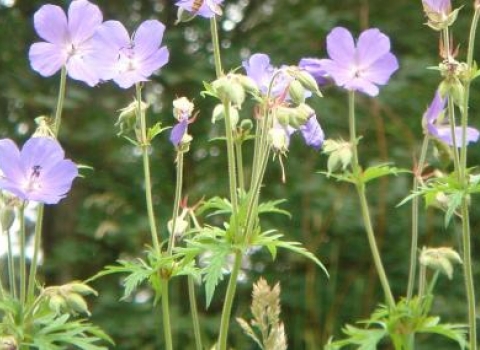Tony's Patch. Image by: Duncan Hutt.
Know before you go
Dogs
When to visit
Opening times
24/7/365Best time to visit
All year roundAbout the reserve
This small reserve lies downstream of an old lead mine and supports a good variety of woodland species and a number of uncommon invertebrates. Also of importance are the extensive deadwood habitats.
The south end of the reserve has an open area of rough grassland. The canopy is dominated by oak together with hazel and bird cherry. There is a fairly rich ground flora including wood cranesbill, opposite-leaved golden saxifrage, wild garlic, bluebell, dog's mercury, wild arum, early purple orchid, wood sanicle and sweet woodruff. Of particular note are toothwort and herb paris. Several species of locally uncommon beetle have been recorded on the reserve.
Bird life of particular note are the tawny owl, barn owl and great spotted woodpecker. Red squirrels and roe deer have been recorded on the reserve and a badger sett is in existence. In the early 1900's the woodland was cut for timber so there are few large trees remaining for hole-nesting species. Sections have also been coppiced in the past, which has influenced the field layer. Non-native species have been introduced into parts of the woodland and some have had detrimental effects on the shrub and field layers and their attendant faunas. Many of the elms on the site have been destroyed by Dutch elm disease, leaving large gaps in the canopy.

